
Brabander Religious Articles is an online store of religious articles that since 2008 sells liturgical products with home delivery in Madrid and nearby towns. Online sale with home deliveries 24/72 h. at very cheap prices.
Visit Religious Articles Brabander if you want to know more about our organization.
Buying in our online store is very simple. All you have to do is:
For more information about the purchase process visit the how to buy section of our online religious store.
Residents in Madrid or towns close to the Madrid community can receive purchases at home or parish in 48/72 hours. from 4 euros. Free shipping for purchases of more than 100 euros and less than 5 kg.
All orders are sent by an urgent transport agency, so they have individualized online tracking. The system notifies the buyer of the progress of the order and allows the delivery date to be coordinated with the transport agency.
If you have any questions, click on the following link and find out about deliveries of purchases of religious products in Madrid .
_________________________________________________________________________________________________________________________________________________________________________________
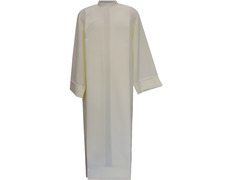
Ref: 52F405

Ref: 1F907

Ref: 1F762
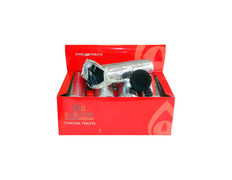
Ref: 103B033

Ref: 144BE16150TR
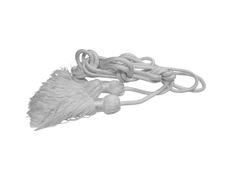
Ref: 52R231
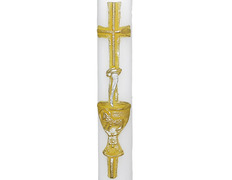
Ref: 3F623

Ref: 5R002
_________________________________________________________________________________________________________________________________________________________________________________

Ref: 2FA94

Ref: 103B033
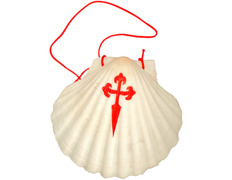
Ref: 24F110080
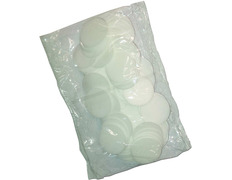
Ref: 126B025
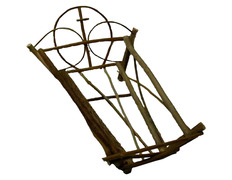
Ref: 33F0JC
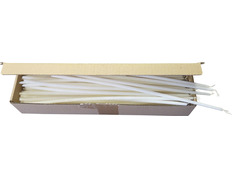
Ref: 3F015
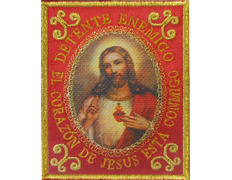
Ref: 110B08065SC
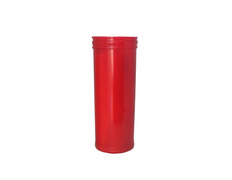
Ref: 3F01002
The manufacture and sale of religious articles in the city of Madrid and in the rest of Spain has evolved based on the process of incorporation of the Spanish to the Christian faith. The Community of Madrid, like the Spanish state, has been a deeply religious place since the early years of the Christian era. Always linked to Jesus, his apostles (especially the Apostle James) and the Virgin Mary.
The commercialization of products and articles for churches, convents, brotherhoods, etc…, the sale of religious articles in short, has gone through different stages defined by the historical circumstances of each era.
The history of the trade in religious articles in Madrid is as old as the arrival of the Christians in the city of Madrid. From the moment in which the Christian armies took the Muslim fortification that was the origin of Madrid, a process of Catholic evangelization began.
Given the breadth of the historical period covered, to delve into the history of the sale of religious articles in the city of Madrid, we have decided to divide the history of the city into three fundamental blocks:
1. Religious Articles in Madrid, online religious stores and sales 2.0.
2. Sale in specialized religious stores
3. Religious commerce in Madrid before specialized shops.
The first block is linked to the change in the paradigm of the trade of religious articles in Madrid during the 21st century. The arrival of online stores, social networks of stores, the professionalization of deliveries of religious articles at home, new electronic means of payment, etc... have forever changed the ways in which the seller and the buyer related in the sector of religious articles in Madrid.
The last two blocks are defined by the creation in Madrid of religious shops specializing in the sale of all kinds of liturgical products, ornaments, religious jewelry, imagery, sacred art for parishes and brotherhoods, etc….
In this small self-made retrospective we want to focus on the trajectory of our own company, Religious Articles Brabander Madrid. In our opinion, the evolution of our religious store is a reflection of the history of stores specializing in the sale of religious articles in Madrid . For this reason, we have decided to organize this short outreach work in reverse of the chronological sequence. That is to say, we will begin with the events closest to the present, and we will advance towards the past, to the origin of the town of Madrid.
As mentioned in the last paragraph of the previous point, we will start with the present and then travel to the past. We will make this little trip starting with the current situation of the sale of religious articles in Madrid , and we will go back to the origin of the trade in the city of Madrid, going through the birth of the first classic religious shops in Madrid.
We started our trip in the s. XXI, moment in which the Brabander Religious Articles activity begins. We will focus on the current situation of our organization because we believe that it is a reflection of the situation of the religious articles sector. Our religious store, like the entire sector of buying and selling religious items, has had to continually renew itself over the years. An unstoppable process over time. A constant search to provide the best possible service to our buyers, taking advantage of the technological innovations that our centuries offer us.
In 2002, with the beginning of the new millennium, taking advantage of the positive situation in Madrid and in Spain in general, a group of friends met to found the company Brabander Religious Articles . The head office is located in Pozuelo de Alarcón, very close to Madrid.
From the first moment, the Brabander organization is oriented to the commercial sector, to the sale of products. In the early years, the organization focused its sales on products related to the Camino de Santiago and the Cathedral of Compostela. For this reason, it decides to move its headquarters to the community of Galicia.
With the sale of articles from Santiago, a good relationship with the Diocese of Compostela begins. During this period we come into contact with a large number of priests, priests, seminarians, etc... Through these relationships in Brabander we realize that there is an opportunity to focus on the sale of religious articles.
The year 2008 marks the official start of Brabander as a religious articles store. A new project begins, transcendental decisions must be made that will define the future of the organization.
After a long period of time analyzing the different possibilities, we decided on two ways to make ourselves known among potential clients of sacred art: to open a store of religious articles and to create a liturgical catalogue.
After an in-depth analysis of the market for religious articles at a national and local level, the decision that seemed the most logical, according to the resources that Brabander Religious Articles had at that time, was to set up a small store of religious products in the center from the city of Lugo, very close to the Cathedral of Santa María and the Bishopric of the Diocese of Lugo.
It was a small store but a big step. With this small establishment of religious objects we would make ourselves known among the parishes and priests of Lugo and Galicia. The store had little space. It only allowed to have a small exhibition of liturgical products: jewelry, ornaments, candles and tapers, etc... The store had a very limited capacity, so the objects on display were very few. Despite this clear limitation, it will be seen later that the sector is characterized by large religious stores, Religious Articles Brabander gradually carved out a niche for itself in the religious products sector at the local level.
Despite the fact that the store worked remarkably, there was a desire that remained among the founding partners of Brabander, the desire to return to Madrid, to return to work in the city that had seen the organization born. To try to solve this lack, what was devised is the sale through the catalog of religious articles.
Sacred art catalogs had been a widely used tool among Spanish religious article stores for many years. Most organizations selling church products have, at one time or another, used printed religious catalogs to publicize their products. Later on, the important advantages that catalogs of religious objects have will be explored in greater depth.
The printed catalog was a widely used tool in the religious articles sector throughout Spain. At Brabander we realized that most of the religious article stores in Madrid used the catalog to sell their products. For this reason we decided that it would be an ideal way to make our products known to potential buyers from Madrid. It would be a good vehicle to return to the origins despite not being physically in Madrid.
With everything in mind, the first catalog was drawn up. It came to light after long months of work. It was necessary to decide which products were shown and which were not. The products that met the quality and price requirements that we had set would be in our catalogue, the rest would be discarded. After making the selection of products, the layout and printing of the catalogs was made.
Once the religious catalogs were prepared, another momentous decision had to be made: to which parishes and/or priests would the catalogs be sent?
In Religious Articles Brabander, from the outset, it was clear that Madrid, both the city and the community, was a priority destination. Despite not having our headquarters in the capital of Spain, the catalog would allow us to work with churches, brotherhoods, monasteries, etc... in Madrid. Somehow the link with the city of Madrid would remain despite the distance.
Secondly, it was decided to send catalogs to priests, brotherhoods and parishes in Galicia. In Brabander it was thought that the store in Lugo and the catalog could be a good complement to make our religious products known to potential Galician buyers.
Finally, catalogs that had been obtained over the years of sales of articles from Santiago were sent. The products of the Cathedral and the Camino a Compostela had been widely accepted by religious communities and parishes throughout Spain.
After two years of hard work, at the end of 2011, Religious Articles Brabander continues its path in the sector of the commercialization of liturgical products, religious objects and sacred art. Two events take place this year that will allow our organization to consolidate itself as a totally reliable supplier for many buyers from Madrid, Galicia and Spain in general.
These two transcendental events are: the publication of a new catalog and the opening of a new religious articles store.
Religious articles stores, especially in Madrid, had needed large exhibition spaces as places to meet and sell with their customers. Large religious stores had sprung up throughout the s. XX. Spaces in which people interested in buying liturgical products, brotherhoods and/or religious images regularly visit to meet the needs of their parishes, brotherhoods, brotherhoods, religious associations and communities, etc...
In 2010, Brabander Religious Articles had the opportunity to move our small store to a new business premises. An establishment a few meters from the original store but with superior features: many more meters of exhibition and storage, greater visibility, better state of conservation, etc... It was an opportunity that we could not take advantage of, many of our most regular buyers encouraged to make the decision. The opinion of these clients was fundamental in order to take this step. The new store gave us the opportunity to display many more religious products, make more offers, receive more people, etc.
The inauguration of the new religious establishment was a great event. The Bishop of Lugo and many other priests and religious honored us with their presence on the day our new religious articles store opened its doors for the first time.
Exhausted the circulation of the catalog of religious articles carried out in 2008, we saw the need to publish a new one. For Religious Articles Brabander it is very important to maintain a continuous flow of novelties that our clients may consider interesting. The catalog of religious articles has many positive points but it is a static element. That is, once it is published, it does not allow any modification. It is not possible to incorporate any new product or present any offer. If a religious articles store wishes to present new products to its clients, it can only do so with the edition of the new religious catalogue.
The selection of the products to include was a greater challenge than in the first catalogue. After the time we had been selling religious products, our offer of images, goldsmithing, ornaments, etc... had increased notably. Although we expanded the number of pages in the catalog, the space was still insufficient for all the items we wanted to display. The only possible option to make a small selection.
The new catalog of religious products was inspired by the 2008 catalog but, in our opinion, it went much further. Especially in the section of showing religious articles with all their beauty. In this new edition we took special care in the treatment of the photographs. The images of the products more faithfully reproduced the colors of the liturgical objects.
We also paid special attention to the structure of the new catalog of religious articles. The fundamental idea was to design a catalog of sacred art easily manageable for anyone. In search of simplicity and simplification, it was decided to place the categories of religious articles with the greatest variety of products on the first pages: liturgical vestments and religious goldsmithing. In total, these two categories occupied almost 80% of the catalog space.
Other religious categories for Brabander and his clients, such as religious imagery , occupied much less space. In the specific case of religious images and figures it was impossible to include all the Saints, Saints, figures of the Virgin Mary, etc... For this reason it was decided to place a small group of figures that would serve as a representation of the great beauty of the religious figures for sale in our store. Something similar happened with the Pasos de Semana Santa, the furniture for the Church , the halos and crowns, the personalized religious articles, the liturgical consumables and brotherhoods, etc...
A few months after opening our new religious articles store, the first version of our web page for religious products was launched. A very simple site where we upload most of the photographs that we had used to make our printed catalog.
The first Brabander Religious Articles online store was a basic website with very limited features. It consisted of a cover, a presentation page of our organization and product sheets.
Each card of a religious article had a unique photograph of the product, a short description and the sale price. Although we hardly had any sales, most of the purchases were made by phone, although many priests contacted us by email. Most of these queries were aimed at knowing some of the characteristics of the liturgical products for sale, or to learn more about the purchase process: payment methods, shipping methods, delivery times, offers, etc. .
Our first online store of religious articles was very rudimentary but it helped us to see how electronic commerce (e-commerce) was an upward trend within the religious products and sacred art sales sector.
The first religious articles stores were shop windows where the products that a certain organization had for sale were exhibited. In other words, it is a relationship in which information flows in one direction, the seller shows a series of data (images, prices and characteristics) to the possible buyer. The online sale of religious articles , like most sectors, underwent a profound renewal with the arrival of social networks.
The arrival of social networks brought with it a new way of communicating between religious article stores and potential buyers. If before the information flowed in only one direction, with the arrival of social networks a dialogue is established. Information flows both ways, the store and the customer have a conversation. The buyer transmits information to the buyer, the buyer responds with questions or suggestions, the seller assimilates the message and answers back to the buyer, etc...
In Religious Articles Brabander we have tried to be at the forefront of the use of technology, always taking care of privacy, especially in relation to knowing the opinion of our clients and friends. Any comment is worth listening to and analyzing, especially if it can help us improve some aspect of our organization. With the 2.0 vision of the online sale of religious objects, we began to design our new online store and create accounts on the main social networks.
The new Brabander Religious Articles online store had two fundamental novelties. The first of them was the Comments section that was incorporated into the file of each of the products. Anyone could give their opinion on any of our products. This was a very important step in getting feedback from our potential buyers.
The second great novelty that we incorporated into our new religious store was the incorporation of online payment methods. From the time of the second Brabander Religious Articles store, anyone who wished could complete an online purchase in our store by paying for their cart through their card or Paypal. The first version of our store only had cash on delivery or purchase by bank transfer. Many of our clients demanded the use of payment methods more linked to the electronic commerce of religious articles. The payment by card or Paypal that we incorporated into our store came to cover the needs of the most technologically advanced customers, always respecting the privacy of the buyer.
The appearance of social networks has meant a new way of understanding the relationship between customers and religious article stores. Facebook and Twitter, especially, have opened a door to the opinion of an organization's friends and clients. Social networks allow us to comment, share, criticize, etc... any information from a store. It is a way of giving buyers and/or users of any service or store a voice and a vote.
Knowing the importance of social networks in Religious Articles Brabander we open accounts on Twitter, Facebook and the most popular social networks. There have been thousands of comments, conversations, opinions, messages, ratings, mentions, etc... that we have had the pleasure of experiencing throughout all these years. Social networks have allowed us to understand a little better which aspects of our organization can be improved from the point of view of the people who know us best, our clients.
After several years of intensive use, and seeing the great acceptance they have had, we expanded the spectrum of social networks in which Brabander Religious Articles can be found. We already have accounts on Instagram and Pinterest.
Throughout all the years of Brabander's history, the presence of Madrid in our day to day life has been a constant. Despite the fact that our organization moved from Madrid to Lugo a decade ago, our link with the place where Brabander was born has never been broken. The parishes, priests, religious schools, monasteries, etc... of the Madrid community have been one of our main clients. This is something that we have taken into account when designing the third version of our online store of religious articles . This can be seen in four main points: mobile version of our online religious store, purchase conditions for our customers in Madrid and the creation of a section dedicated to Nativity Scenes (Shop for Nativity Scenes for Madrid).
The trade in religious articles has undergone many changes throughout history. One of the latest transformations that online stores have undergone has been the tools used to navigate the Internet. Originally, desktop computers were mostly used. Nowadays all this has changed with the appearance of smartphones and tablets, WIFI networks and 3G or higher data rates.
The combination of elements such as the latest generation mobile phones and tablets with the appearance of mobile Internet networks has led to a small revolution in shopping with online carts. More and more buyers of religious articles are visiting their favorite stores through their smartphones or tablets. This trend is especially marked among buyers from the city of Madrid. The inhabitants of the Madrid metropolitan area, on average, are among the most technologically advanced Spaniards.
One of the elements that most determines the purchase of religious articles online is transport costs. This section has always been very important for Brabander Religious Articles, especially in the sales we make to Madrid.
After several years of searching and negotiating we have found an express transport company specialized in home delivery in Madrid. Sales of Religious Articles Brabander to Madrid have reached such a volume that it has allowed us to agree on preferential conditions for shipments to our Madrid customers.
In addition, the new online store has allowed us to categorize religious products by weight, and associate a shipping price with each weight. In other words, for the first time in our online religious store, buying a religious product weighing 1 kilo (such as a stole) will cost much less than buying religious products weighing 15 kilos (for example, several boxes of six-day candles) .
Finally, it should also be noted that we have incorporated a cheap delivery, a 48/72 hour delivery. Much cheaper than traditional 24-hour shipping. This new modality has the same features as traditional urgent shipments but with one exception, delivery is scheduled for 48/72, not 24 hours. Cheap shipments for less than €5, urgent shipments for less than €7.
In addition, the catalog is expanded with new Via Crucis (wooden and metal), embroidered stoles, candlesticks (metal and silver), candlesticks, altarpieces, lamps of the Blessed Sacrament, ...
Nativity scenes stores in Madrid are one of the variables of religious stores that historically have had the greatest importance. The city of Madrid has always been linked to the representation of Christmas with beautiful Nativity scenes. Many religious article stores have incorporated into their catalogs figures and images of shepherds, animals, the Magi, the Child Jesus, Saint Joseph and the Virgin Mary, etc..., in short, Nativity scenes to decorate churches and homes during Christmas.
Following the path of other Nativity Scene stores in Madrid at Religious Articles Brabander we have decided to incorporate figures for Nativity Scene into our catalog of religious imagery. The incorporated Nativity pieces are fundamentally of two types: economic figures for Nativity scenes and figures for Nativity scenes from the Olot workshops, made of wood pulp.
In our online Nativity store we have for sale a series of cribs and Nativity scenes made of marble and resin at very affordable prices. They are small pieces that are usually bought to decorate a house or office.
We have for sale Nativity Scenes with the Holy Family, the manger and the cow and the ox, and other Nativity Scenes that include shepherds and the retinue of the Magi.
The religious imagery of Olot represents one of the most renowned craft schools of religious figures and images in the world. The pieces that come out of the Olot workshops are recognized and respected by lovers of religious imagery from any country in the world.
In Religious Articles Brabander we have incorporated the figures of the Nativity Scenes of Olot to our online store. Religious images made of pulp wood with glass eyes. Images for Nativity scenes painted entirely by hand with oil paint.
These images are for sale in all kinds of sizes, from small figures of 30 cm. up to large pieces in 70 cm.
After analyzing the situation of religious articles stores in Madrid during the s. XXI, in this block we will focus on the classic religious shops. Organizations that were emerging in the town of Madrid at the end of the 19th century under the mantle of the liberal ideas prevailing at the time.
The end of the guilds, along with other factors such as the arrival of the Industrial Revolution, represents a new beginning in the sale of religious articles. The monopolistic rules and the classification by activities of the Madrid guilds disappear. It is now possible for a single store to offer all kinds of religious items to Madrid parishes.
In this opening era, several religious stores dedicated to the sale of Catholic imagery, rosaries, garments for religious communities, etc. are founded in the Spanish capital. Religious articles stores such as El Ángel Religious Articles, originally Religious Articles Sobrinos de Pérez , also known as The Angel of Madrid ; o Alsina Religious Articles , also known as Alsina SA of Madrid ; Beautiful Religious Articles ; the Casa Nazareth Madrid ; or Santarrufina SL Madrid have their origin in those years.
The map of religious articles stores in Madrid is characterized by the fact that each one of them starts the activity specializing in covering a specific aspect of the needs of religious communities. Some of these stores focus on the elaboration of priestly garments such as chasubles or cassocks, other religious stores start with the sale of a small selection of sacred art, other stores offer candles, tapers and candles, others sell Crosses, etc...
Most of these religious shops are located in central areas of Madrid, occupying small premises that, on occasion, serve as a sales shop and manufacturing workshop. The first years are difficult. Getting a fixed clientele is very laborious. Little by little, some of these religious article stores are making a niche for themselves among Madrid buyers, and more and more priests and religious are familiar with them.
The sales of each day are giving them an orientation about the most demanded liturgical products. Some religious articles cease to be manufactured and their place is taken by the sale of new designs. It is a process of continuous learning. The range of products is becoming more and more extensive: Virgin medals, crowns and haloes for Saints, catering services, high-quality chalices, altar stands, litters for Holy Week, processional lanterns and embroidered canopies, rosaries, albs, ciborium, ...
In this process of assimilating the functioning of the market for religious articles , some religious stores realize that their own workshops are insufficient to satisfy the wide range of liturgical products that a church may demand. It is very difficult to be competitive manufacturing liturgical vestments and religious jewelry in the same space and with the same employees. They are completely different manufacturing processes. The knowledge and raw materials necessary to manufacture liturgical vestments have nothing to do with those necessary for the manufacture of religious gold work or pieces of sacred art. For this reason, some of the religious articles stores establish strategic alliances with specialized manufacturers and/or artisans: textile manufacturers for chasubles, stoles, lectern cloths, liturgical accessories, etc…; craftsmen goldsmiths and silversmiths for the manufacture of chalices, chalices, candlesticks, altar crosses, etc...; carvers for pieces of sacred art, wood carvings, etc…
With the consolidation of these alliances, the stores can focus on sales and advice to religious communities and churches. In this way they perfect their services to offer the religious articles that best suit the needs of each client.
The entrance of the 20th century offers a moderately optimistic panorama among the religious article stores that were founded in Madrid at the end of the 19th century. On the one hand, some of these stores have closed, but others have managed to consolidate and maintain a growing sales volume.
The store location is closely linked to the sales of the surviving companies. The store location is the place where potential buyers are received, where customers are advised and religious products for the altar are displayed. It is very important to have a well acclimatized place with a wide variety of religious objects. For this reason, Madrid shops try to increase their exhibition meters or look for new larger premises where they can have their sacred art exhibitions. It is also important to have a good warehouse where to locate the products that are not going to be exposed. Some of the stores get more meters by buying premises adjacent to their store, while others directly move to new spaces.
The search for the expansion of the physical space of the store and the growing competition in the religious articles sector are the main problems that the new generations have to face. Most of the religious stores in Madrid are passed from father to son and will remain in the hands of the same family throughout the years.
In general, the religious articles sales sector enjoyed a favorable situation until the 1930s. This was the moment when Madrid society, like the rest of Spain, was torn apart by the Civil War. Battle that lasted three years and pitted brothers against brothers and neighbors against neighbors. Madrid society took part on both sides. Many people from Madrid died fighting and many others suffered the fateful consequences of a military confrontation of these characteristics. The political and social situation is desperate.
After the war, society was deeply impoverished. Many people went hungry throughout Spain. They were decades of deep need in all levels of Spanish society. The war had transformed the economic panorama of Madrid. Much infrastructure and buildings had been destroyed or looted, food supplies had been cut off, and most basic goods were in short supply.
Over time, little by little, the most basic needs began to be covered. Supplies and infrastructure were restored. Commercial activity began to revive. With the commercial activity, jobs resurfaced. Old partners were reunited and alliances between manufacturers and sellers were resumed. Religious articles stores reopened their doors in their sales premises.
After several years of positive evolution, religious article stores in Madrid must face new challenges. After the harsh post-war years, the Spanish global economy recovered rapidly. A time in Spanish history that is known as the Spanish Miracle.
Madrid, together with the most developed areas of Spanish territory (Basque Country and Catalonia), was one of the main engines of this economic recovery. The three communities, in addition to developing a strong industrial and service structure, also experienced a new demographic upturn driven mainly by internal immigration from Spanish agricultural areas.
The Spanish economy as a whole, and the religious articles sector in particular, experienced a period of expansion from the 1970s to the end of the 20th century. It is true that during this period it had to face times of marked recession, but in general, the standard of living of the Spanish experienced a notable improvement. During this period, three trends were generated that profoundly transformed the way of understanding the relationships between buyers and sellers of religious articles.
In the first place, the progressive opening and internationalization of Spanish trade, with Spain's accession to the European Union in 1986 having special relevance. Second, the progressive increase in the purchasing power of Spanish citizens, especially of the middle classes. And in third and last place, the modernization of the communications system, infrastructures and domestic and industrial technology.
The combination of these three factors consolidated Spain as one of the main economies in the world. In these circumstances, Madrid, as the capital of Spain, became one of the main European and world business centers.
As mentioned in the previous point, in the last third of the 20th century, the Spanish economy experienced an amazing take-off. The classic religious article stores in Madrid, we will call those founded at the end of the 19th century, take advantage of the situation to improve their positions in the art and sacred products market. New vendors enter the market to offer their services to priests, religious schools, parishes, altar objects, etc... Despite the appearance of new religious shops, the Madrid market does not stop growing and these circumstances favor the shops with more experience.
The emergence of new technology and infrastructure allows most vendors of religious items to reach parishes that previously could not serve. In addition to the increase in national trade, this period is characterized by the opening of Spain to the world. The internationalization process is experiencing a key moment with the incorporation of Spain into the European Union. From this moment on, a large number of opportunities are generated for religious stores in Madrid, especially for the most consolidated organisations.
The opportunities are twofold. On the one hand, the stores can access buyers from all over Europe. The demand for religious products in Europe is much higher than the Spanish demand and, of course, the Madrid demand. On the other hand, Madrid stores can come into contact with very competitive European suppliers, especially Italian vendors, Polish vendors, Portuguese vendors, etc… European manufacturers with extensive catalogs of religious products that give Spanish stores the opportunity to complement the offer of items that they already have. Liturgical products that they manufacture themselves, or that they acquire from Madrid or Spanish suppliers.
The opening to Europe, and to the World, also carries some inconvenience. Basically the appearance of new competitors eager to sell to churches and religious communities in Madrid.
In a period of economic expansion such as the one experienced in the last third of the 20th century, unemployment is drastically reduced. This decrease in the number of people without work means that most families regularly obtain income. The continuous flow of money encourages the faithful to contribute more actively to the needs of their churches, either directly in their parish with donations, or with contributions through personal income tax, etc...
Despite the fact that the Holy Mother Church occupies a prominent place in the hearts of the majority of Madrid residents, times of scarcity make it difficult to make a determined economic contribution to the parishes. In this time of greater economic capacity, priests and bursars take the opportunity to give greater social service, renew their costumes, buy new pieces of liturgical goldsmithing, etc... This circumstance favors religious article stores . In Madrid, and in most of Spain, during these years there are a large number of clients willing and able to buy liturgical objects and products for the parish altar.
The improvement in the living conditions of the majority of Spaniards and the incorporation into the European Union bring to Spain, especially to Madrid as the capital, a series of new possibilities that will result in a new way of relating to buyers of liturgical products. and coffers.
In a time of profound social and economic changes, the sector of the sale of religious articles suffers a strong shock, the old ways of working are no longer effective, once again we have to evolve with the times. Changes in the way religious articles are marketed affect almost all elements of the sale, but especially the way of communicating with buyers and distributing religious objects.
The European structural funds allow Spain to modernize its infrastructures in a revolutionary way. A new network of high-capacity highways, airports, high-speed trains, etc… Freight transport, especially by land, is undergoing a profound renovation.
These changes affect article stores in Madrid in two fundamental ways: the appearance of urgent transport with national coverage and the increase in commercial visits to churches and other potential buyers of sacred art.
The new road network generates a significant reduction in transport costs in national shipments. The first urgent transport companies with national coverage appeared on the market.
These specialized urgent transport agencies create a great opportunity for religious article stores in Madrid . From this moment they could serve and sell their religious products to customers from anywhere in Spain, and even the world. Until now, the physical store of religious articles was the main point of contact with buyers. Most sales are generated by visiting customers. As of this moment, this trend is reversed, the organizations of religious products in Madrid can send the products to their clients.
The improvement in the roads and means of transport, the universalization of the use of the automobile, allow the stores to decide on a new way of publicizing their offer of art and sacred products, the commercial agents.
The religious article stores in Madrid, in search of their national expansion, had solved the logistics part, the creation of national transport companies allowed them to serve buyers from all over Spain.
Despite this, they had another challenge on their way, how were the buyers to know about their offer of religious articles? That is to say, for example, how a priest from Seville was going to know the religious products offered by a store in Madrid. This point was vitally important. Publicizing the religious products of his store was essential to get customers to make purchases. The commercial agents allowed them limited geographical coverage.
To remove this stumbling block, religious supply stores borrowed a tool from other business sectors. A sales tool that was being used in other sales markets nationwide, the printed catalog.
The catalog of religious articles was the perfect tool to publicize the variety of products that each store had. It had numerous advantages that compensated for the high cost of printing:
It made the name of the store known against the competition.
It allowed to include a great variety of religious articles.
It gave information on the characteristics and price of each of the religious products.
It served so that each buyer could place orders for a long period of time.
Geographical selection of the target customer. Stores could select where they wanted to send their catalogs of religious articles.
The definitive boost to the sale of religious articles by catalog was given by the universalization of a new communication technology: the telephone. A new method of communication that reached most Spanish parishes from the 70s. The telephone allowed Madrid stores to receive purchases extremely quickly.
The process of selling religious articles stores was extremely simple and efficient during the last third of the 20th century. It basically consisted of three steps.
The stores searched in different databases for the address of a possible buyer: a parish, a brotherhood, a monastery, a cathedral, etc…
In the early years this initial step was particularly laborious. Religious article stores in Madrid only had information on their closest customers. Over the years, more and more addresses were incorporated into the databases that they created themselves.
Once the selection of potential buyers of religious products had been made, the catalogs were sent. Religious stores typically mass-shipped in the hope that their name or catalog would be a deciding factor in the priest choosing their products over the competition.
During this time a parish received a wide variety of catalogs of religious articles . These catalogs were from Madrid stores and from stores in other parts of Spain. Sales by printed catalog consolidated in the sector. The vast majority of religious article stores in Spain used this tool to sell their products: medals, crosses, chasubles, Virgins, embroidered liturgical accessories, crowns, restoration of images, figures of Saints, lecterns, albs, chalices, liturgical liturgical liturgical accessories, lanterns, rosaries, ciborium,...
The telephone was key in the sale of religious articles by catalogue. The priests or nuns, once they received the catalogue, if they were interested in a product, they called the religious store to place the order. On numerous occasions there were no direct sales of religious articles, but first advice was given and clarifications were given on the properties of some of the products.
The informative and advisory work, which was formerly carried out in the exhibitions of religious article stores in Madrid, was now given remotely with the help of the telephone.
This immediate way of solving doubts or any other problem allowed many religious stores in Madrid to create a brand image at a national level. The fame that these stores had gained in the religious community of Madrid now spread to the rest of the Spanish territory.
The catalog of religious articles was a key tool for religious shops in Madrid. Its importance remained for decades until the end of the 20th century. The beginning of a new millennium brought with it something that, once again, would revolutionize the religious articles sector. His name, Internet. New concepts were incorporated into the vocabulary of sellers and buyers of religious articles: online religious store, social networks, Paypal, etc...
This section covers approximately eight centuries of the history of Madrid. A period too wide to be practical when making an in-depth analysis. However, it does allow us to get an idea of the origin of the sale of religious articles in Madrid. This section includes the period of time that goes from the conquest of the town of Madrid by the Christians to the appearance of religious stores. specialized religious articles.
The city of Madrid has a Muslim origin. In the early years it was little more than a fortification that passed into the hands of the Christians in the 11th century. The small town in Madrid was conquered by the Castilian Leonese troops led by King Alfonso VI. One of the first measures taken by the Christian king was to purify and consecrate the main mosque in Madrid. This mosque was consecrated to the Virgin Mary and was renamed the Church of Santa María la Mayor. In these early years, most of the furniture, gold work (Crosses, ciboriums,...) and other religious articles that were placed in the temples came from artisans from the north of the peninsula.
The Christian reconquest had no turning back and culminated in the year 1492 with the conquest of Granada by the Catholic Monarchs.
From the s. XV the population of Madrid does not stop growing. With the settlement of more and more Christians the need for new churches and chapels increases.
The growth of the city of Madrid, both in population and in power, experiences a definitive push in the year 1561. Date on which Felipe II named the Villa de Madrid capital of the Catholic Monarchy and capital of the Spanish Empire. This fact is fundamental for the evolution of the population of Madrid. It is estimated that in 1561 there were less than 20,000 people from Madrid, rising to more than 100,000 people from Madrid at the end of the 16th century. In just four decades the number of inhabitants of Madrid multiplied by five.
The demographic explosion entails an increase in the demand for services, products, etc… Of course, new Catholic temples are consecrated throughout the city of Madrid. With the construction of new churches, the purchase of religious articles, liturgical candles, priestly vestments, religious furniture, etc… grows remarkably.
The demand for religious products is satisfied by the guilds of specialized craftsmen. The city of Madrid is full of groups of artisans associated by activity that sell most of the religious articles that the churches of the time demanded. The carpenters guild sold the furniture that the church needed, the jewelers and silversmiths guild handcrafted the goldsmith pieces for the priests, etc…
In addition to craft guilds, wealthier churches and cathedrals hired painters, sculptors, and other artists to create works embodying the teachings of the Bible on their walls and sculptures.
At a time when a large part of the population was illiterate, the construction and decoration of churches was used to evangelize people. Most of the inhabitants of Madrid did not know how to read or write, but they could imagine the greatness of God through the architecture of the Catholic temples. Or contemplate the great love of Jesus for us when they saw a figure of Christ suffering on the Cross.
From the 16th century, the commercial organization of Madrid began to change slowly. During the following years the power of the guilds begins to wane. The appearance of new currents of thought linked to the Enlightenment and capitalist movements are opposed to the commercial organization of the guilds. They are finally abolished in the mid-19th century.